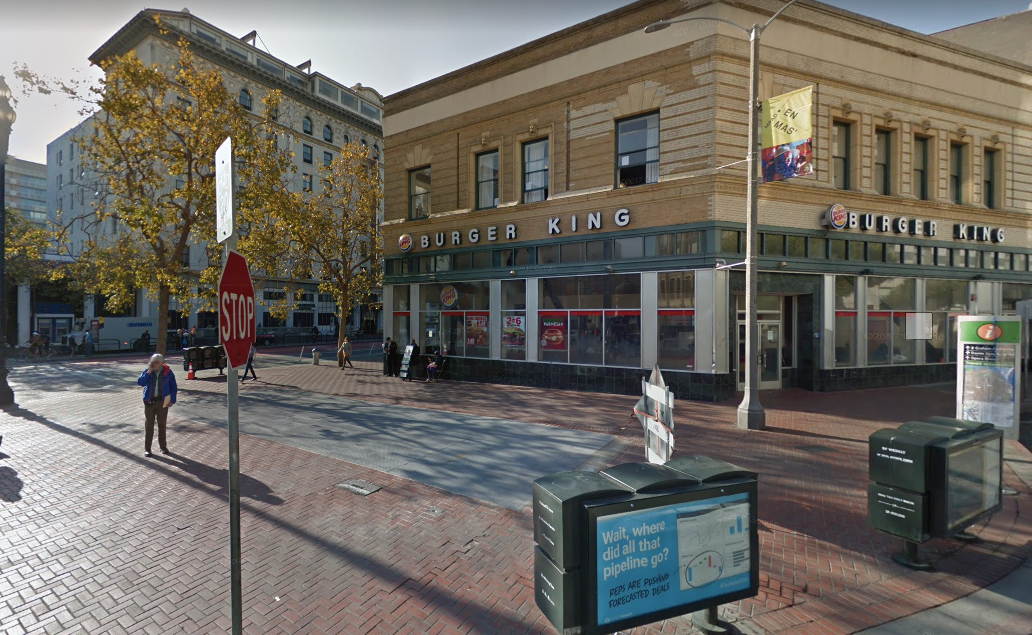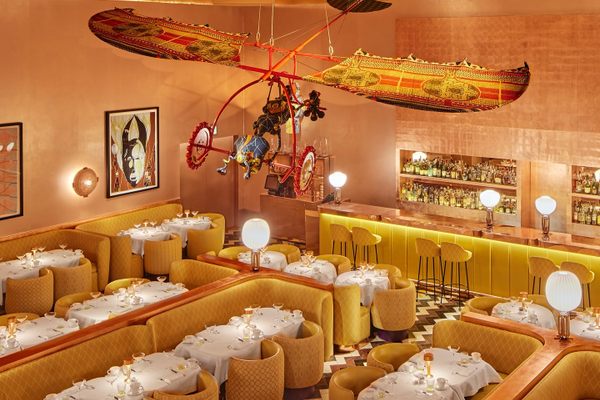Why a San Francisco Burger King Blasts Classical Music Day and Night
It’s not meant to be pleasant.

Just outside a Burger King on Market Street, San Francisco’s main thoroughfare, classical music plays day and night. Instead of the hits circa 2018, it’s more the hits circa 1718, from composers such as Vivaldi and Bach. For years, San Franciscans have puzzled over why baroque constantly plays at a high volume on this block. But as an article published today in the Los Angeles Review of Books explains, the otherworldly music serves an earthly purpose: to discourage local homeless people from sticking around.
Sound has long been used in public places to discourage loitering. In LARB, author Theodore Gioia writes that classical music as crowd dispersal probably dates to 1985, when a Canadian 7-Eleven pioneered the playing of Mozart in parking lots where people gathered. The tactic became store policy at almost 200 locations. Other methods are less sonorous. In 2008, increasing sales of a device called “the Mosquito” made news as it was installed in malls, movie theaters, and parking lots. Since the Mosquito emitted a tone that only young people could hear—due to more sensitive hair cells in ears—it was touted as a way to deter lingering teenagers.
While the Mosquito incited outrage for targeting the young, it’s harder to be outraged about classical music. On one hand, it’s often seen as cultured and even soothing. Other fast food restaurants, such as McDonalds, tested using classical music to break up drunk brawls. But instead of its calming properties, it’s other aspects of classical music that appeal to those trying to tame “anti-social” behavior: It’s loud, and some people dislike classical tunes, considering them elevator music-like or elitist. That effect seems to have been sought after at the Market Street Burger King, where local property owners put forward the idea of playing classical music to shoo away anyone uninterested in buying Whoppers.
This musical strategy is similar to hostile architecture, which uses design features such as strategically placed spikes and dividers on benches to keep homeless people from lying down. Neither solves underlying problems; instead they drive them away. And in both cases, once you’re aware of the tactic, you may start to notice it everywhere.
Gastro Obscura covers the world’s most wondrous food and drink.
Sign up for our regular newsletter.






























Follow us on Twitter to get the latest on the world's hidden wonders.
Like us on Facebook to get the latest on the world's hidden wonders.
Follow us on Twitter Like us on Facebook